Visiting Churches in Quito
July 5, 2015
At 7:30am I had breakfast with the leadership group in a meeting room off the main cafeteria dining room. There I found out that I was to bring the message at Quito Norte Church, and that I was assigned to the team that would work during the week at that church. The five teams would go to the churches in which they would be working.
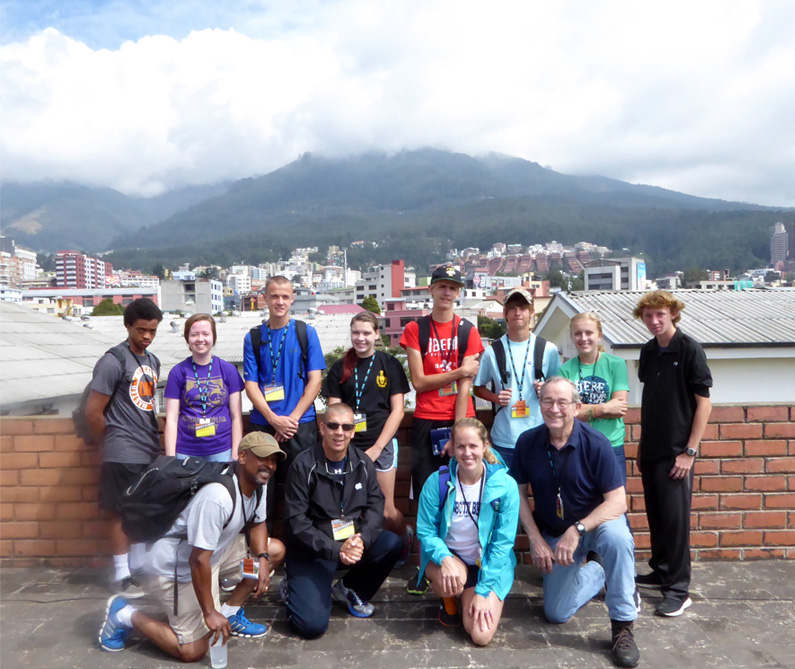
We were assigned to teams that had members from several churches, which was a blessing which allowed us to form a community of new brothers and sisters in Christ. Our team members were, back row L-R: Kal'el Wright-Jones (Broadview,Chicago), Kaleigh Baughn (Fairview, Apex, NC), TJ Crutchfield (Ebenezer, NC), Jordan Nave (Northshore, Slidell, LA), Aeron Ravelo (North Park, Forth Worth), Grayson Johnson (Fairview, Apex, NC), Haley Edwards (North Park, Forth Worth), Dustin Jackson (Northshore, Slidell, LA). Front row Curt Brady (Broadview,Chicago), Tim Crutchfield (Ebenezer, NC), Leigh Talley (Ebenezer, NC), Rod Nave (Northshore, Slidell, LA). Tim Crutchfield is our Crew Leader for Crew #5. We typically had our crew planning meetings and devotionals on the roof of our building in the Alliance Academy, in view of the city and the mountains. This view is generally eastward over some of the more modern parts of the city.
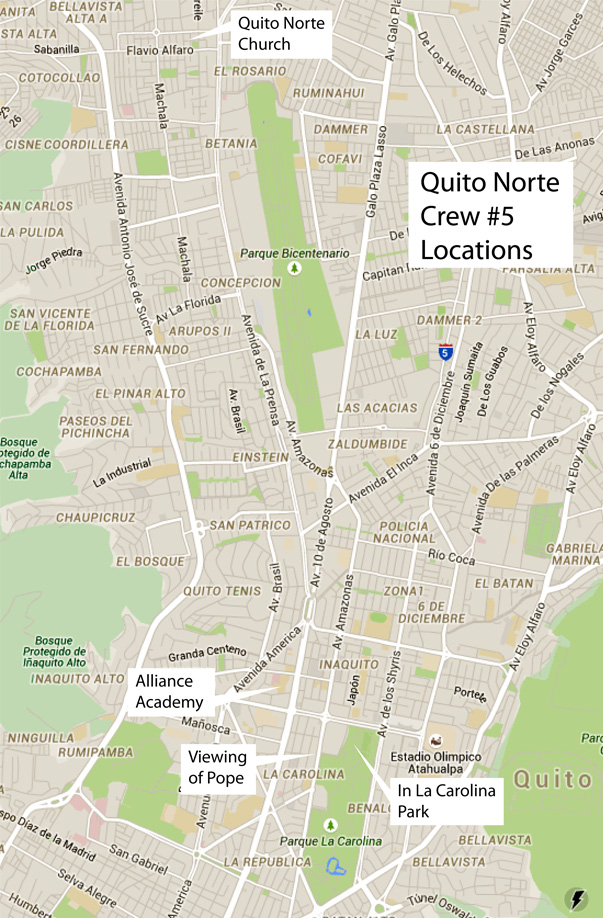 |
We boarded the bus which was to take us to Quito Norte church. These bus rides were adventures through the crowded and narrow streets of this densely populated large city. The map shows the location of the church relative to the Alliance Academy International where we were staying. This map shows the boundaries of the involvement of Crew #5 except for our trips to and from the airport and the day of exploration. |
 |
This was our first view of Quito Norte church. It was on the corner of a block of attached structures and across from a small community park where we were to conduct our basketball and soccer activities for their Vacation Bible School. Essentially all structures had fences, walls, or other security structures. |
When we arrived at the church, Pastor Alfredo Pérez was in the middle of his adult Bible teaching in the sanctuary. Luis had told me that the church would remind me of a U.S. Baptist church of the 70's, and I could see his point. Everything was neat, and the adult men all wore coats and ties. We were welcomed in to the relatively small crowd, and our translator, Daniela Alvarez, was put to work immediately, translating his teaching for us. Enthusiastic and articulate, Pastor Alfredo's teaching was clear and more easily understood for me than the Spanish of the Mexicans to whom I more commonly listen. |
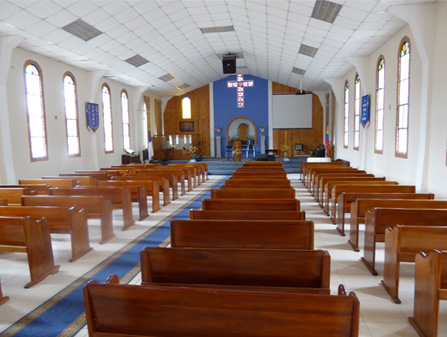 |
When time came for the worship service, the sanctuary (they called it 'el templo') quickly filled up and was almost packed. It seated about 200 and we found a bulletin that said last week's attendance was 185. They had an extensive and modern musical worship time, led by guitarist Pavel, with whom we had a lot of fellowship during the week. When Luis suggested last week that I might be asked to speak, I had prepared some comments, but I was certainly nervous about it and became more so as the announcements and other items of the service became more protracted.
We had a time of greeting, so the team members and I moved about the sanctuary, greeting the people. That calmed me since I have done that routinely in Iglesia de Mableton congregation where I attend regularly after our English service. I was comfortable with saying "Dios te bendiga" and was greeted enthusiastically by everyone I approached except for an elderly, indigenous-looking woman, who stiffly turned away from me.
About the time for the message, it was decided that the youth of the church would go out and hand out flyers for the Bible school later in the week, so all of our team except myself and Luis went out with the youth. We had decided that our Crew leader, Tim Crutchfield, would make comments about the team and what it would do during the week. But when I was finally called up to the pulpit, Tim had joined the rest of the team and the local youth to go to the community. So I called on Luis to do that.
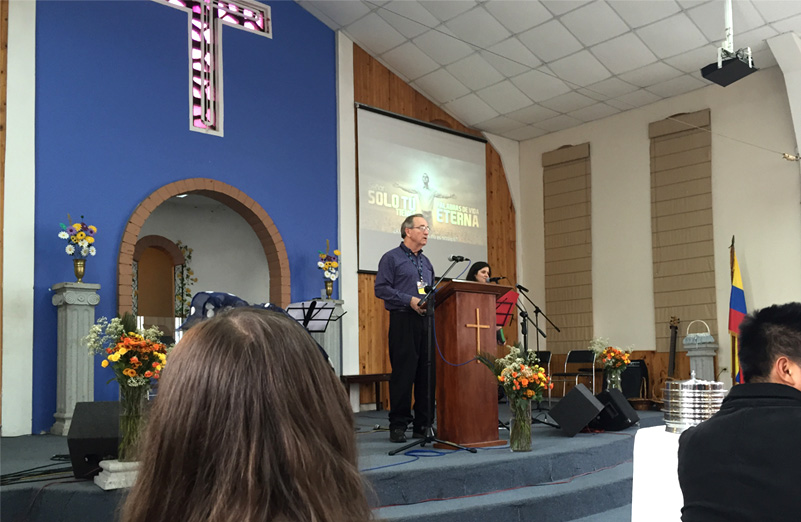
Finally it was time for me to speak - for which time I had been sitting there praying. I started out by telling them that I had been a professor of physics for 50 years, but that I had been a follower of Christ for 58 years, and that was more important. Thinking that I should just make use of my background, I started out by talking about the great wonder of the creation that God had made, marvelously fine-tuned for the existence of life. I used the precise behavior of a hydrogen atom, and then coupled to oxygen to make a water molecule, all of which were exactly alike and functioned essentially perfectly for the function for which they had been created. But they could not praise God.
I then went on with scriptures to describe that God had made man in His own image, and we had the capacity to praise Him, but that we failed and had a sin problem. Toggling back and forth between the nature of the physical creation and the human need for forgiveness and relationship to God, I basically followed the Roman road to salvation and the need for repentance and faith.
The people were gracious and my words were well-received, and I saw that in large part as the result of a marvelous job of interpreting by Daniela. This was the first time I had ever spoken through a translator. But as we proceeded, she smoothly translated and we fell into a rythmn of a couple of sentences at a time, which gave me a little thinking time. So with that expert help, we were able to provide a message of reasonable length and content.
After the message and comments by Pastor Alfredo, who responded to my water molecule discussion, they prepared for communion (Santa Cena). The Pastor called me up to participate in the distribution of the elements. Since I was calmed down now, that was a great blessing to me as I handed out the bread to one section with the comment "Dios te bendiga". But two moments stand out in my memory. One was that one of the ladies in the congregation took the communion while openly breast-feeding her baby. No one was taking notice, and it seemed perfectly natural. The other moment was that the elderly lady who had turned stiffly away from me during greeting time was now all smiles and took the bread from me enthusiastically.
After the service I talked a good bit with one man who spoke English very well, having studied in California for part of his education. He also told me he listened to John McArthur on radio a lot. He was in some kind of graphic arts business.
The people were very gracious and insisted that I take a bowl of spicy tomato-and-bean soup with a popcorn side. Dustin and I ate bowls of it, but Luis was a bit nervous about that because it was a cold soup and the water wasn't boiled.
It was overall a good interaction for our group with the church. Our youth enjoyed the trip out into the neighborhood.
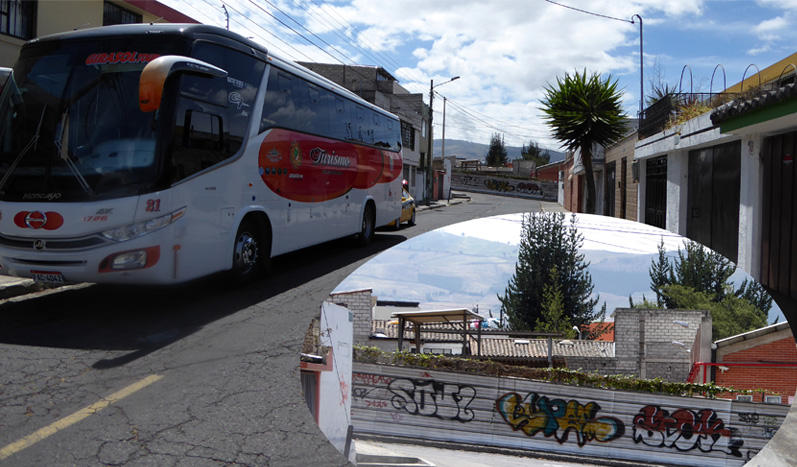
After this get-acquainted service and fellowship with Quito Norte church where we were to serve later in the week, we got back on the bus for the return to Alliance Academy. We were learning about the city as we rode, and one common feature was concrete walls along the roadways, typically covered with graffiti.
Another common feature was shards of glass on top of scalable walls. 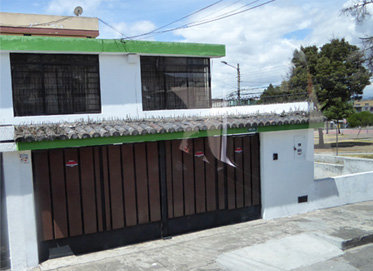 | 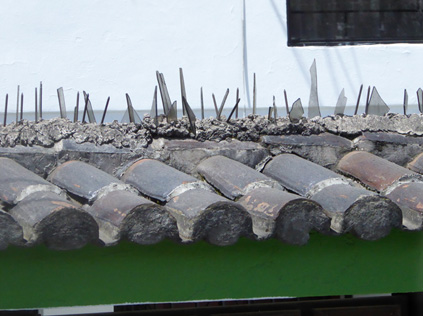 |
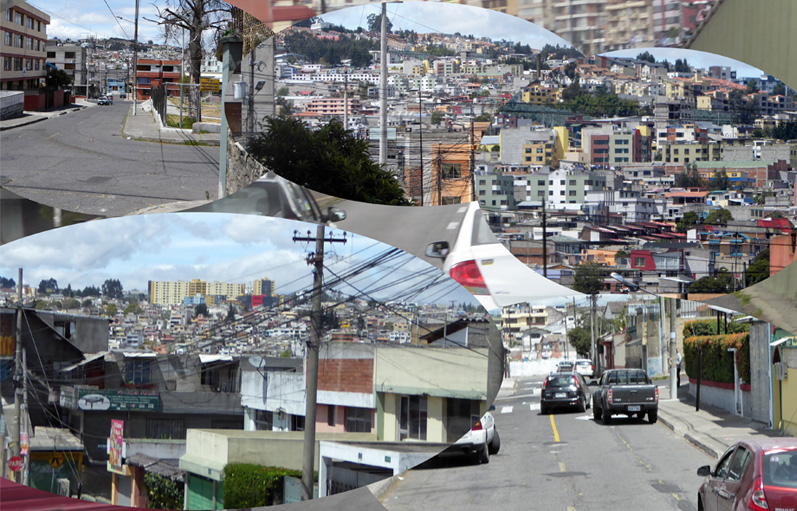
The thing that struck me the most while riding through the city was the density of the closely packed houses extending up all the slopes. The time sequence above is clockwise from upper left. The first is a view from right behind the church, with the edge of Parque Cumana where we would do basketball showing on the right. The second and third are fairly nearby, showing the houses up the mountainside. The fourth and fifth images are closer to the city center, still showing the density of the rectangular concrete structures. The maze of wires everywhere made it evident that they haven't gone to fiber optics yet for communication.
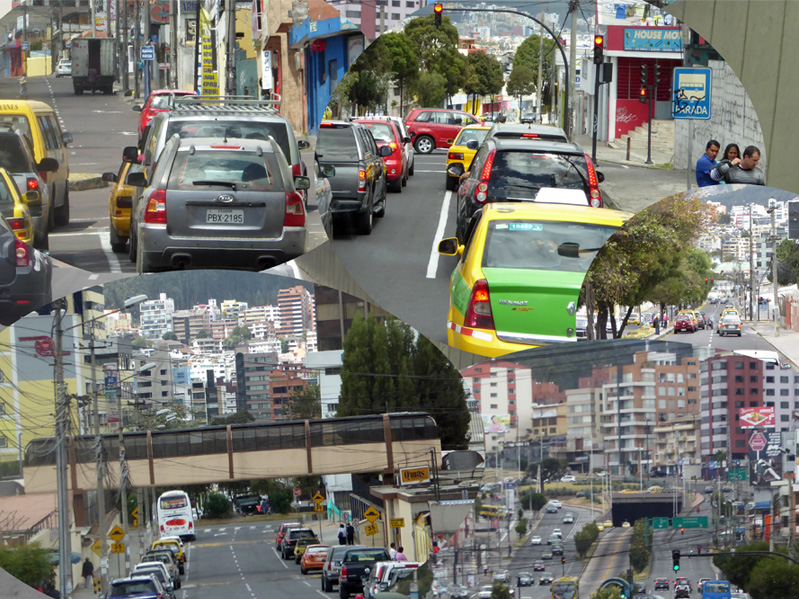
Again in time sequence clockwise from upper left, these are street scenes on the way to the Alliance Academy. The bus drivers certainly earned our respect.

After an orientation and training session with Ron and Shawn in the afternoon, we took a trip to a high park overlooking the city. Along the way, there was the vast sprawl of houses up and down the slopes of the mountains that we were becoming accustomed to.
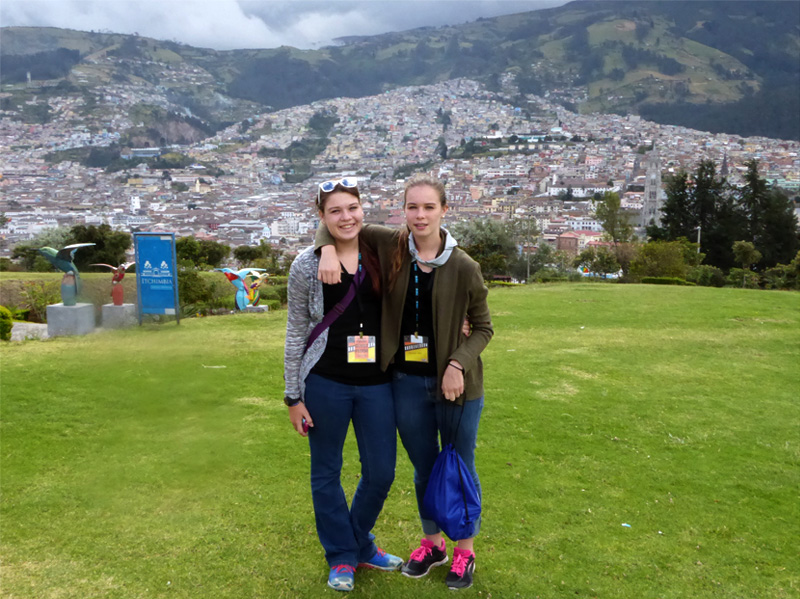
Jordan and Ashleigh on the green slopes of the high park which overlooks a concentration of more than 20 Catholic churches within the large collection of buildings in this valley. | 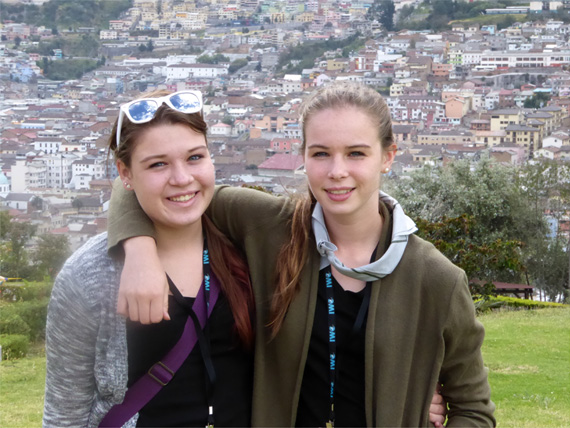 |

 |
This is Basilica of the National Vow (Basílica del Voto Nacional). The building is noted for its grotesques in the form of native Ecuadorian animals such as armadillos, iguana, and Galapagos tortoises. wiki |
A detailed section from this shot by Luis shows a pair of dolphin and a pair of iguana as stone gargoyles high on the structure. You can just see the line of stone figures on the broader view above. |
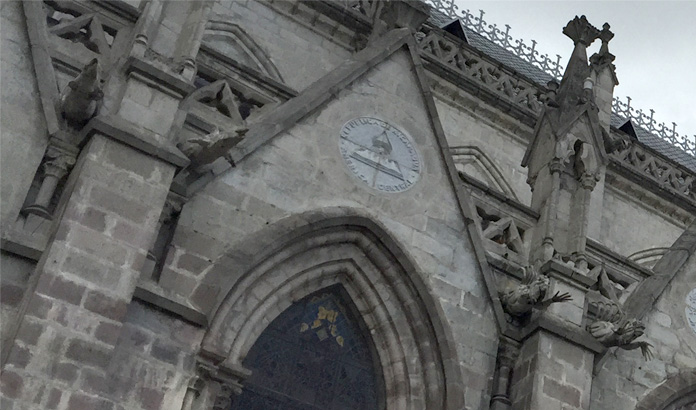 |
 | This full view of the Basilica was taken by Luis. I removed a few wires. |
The intricacy of the stone structure was modeled after Notre Dame, we were told. |
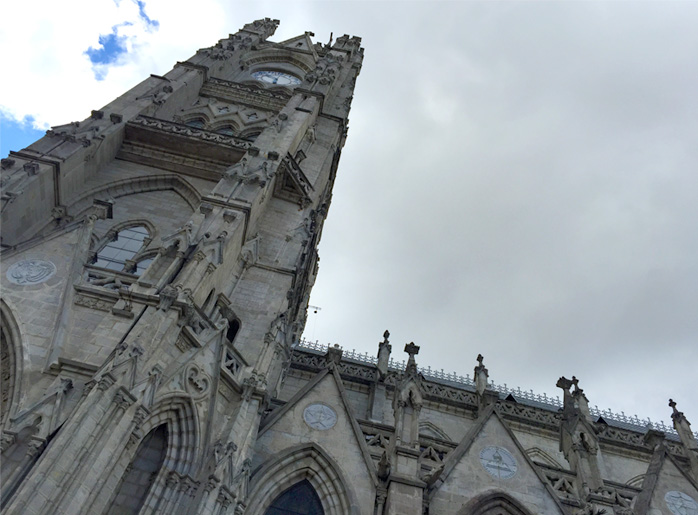 |

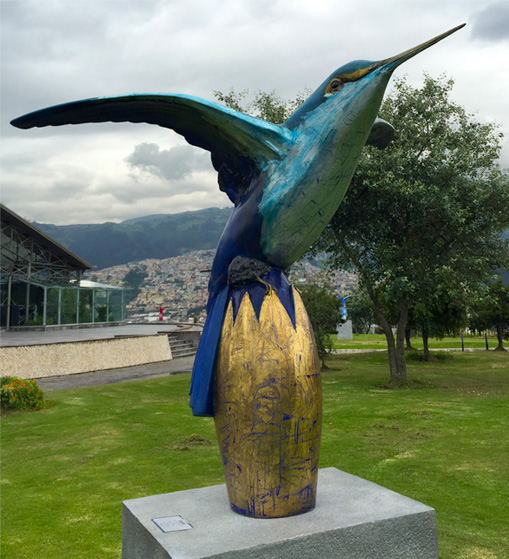 | The above view of old Quito is centered on the Basilica and includes the double row of hummingbird sculptures in the mountaintop park. We saw hummingbird sculptures everywhere, a tribute to the more than 130 species of hummingbird in Ecuador and Colombia. |
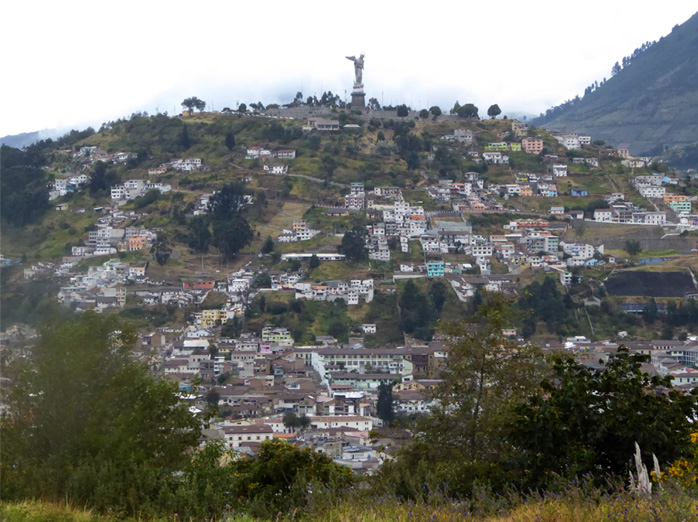 | On a small peak to the left of us was a huge statue of Mary overlooking the city. The 200m-high hill is called El Panecillo (like a dinner roll), so that term is used to describe the statue with the hill. We were told that there were two aligned heart-shaped windows in the cathedral that were in the line of sight from Mary to a place where the Pope had said mass. |
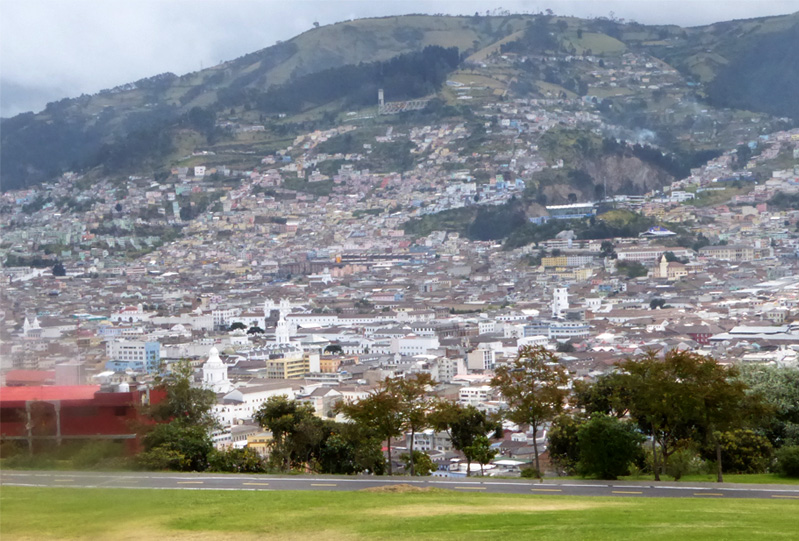
This view contains the Metropolitan Cathedral of Quito, known simply as "la Catedral", as well as a half dozen or so other Catholic churches. It is the Catholic cathedral in Quito, Ecuador. Located on the southwestern side of the Plaza de la Independencia (La Plaza Grande), it served as a seat of the Diocese of Quito from 1545 until 1848 when it was elevated to Archdiocese. In 1995, it was elevated to the Cathedral of Ecuador, making it the seniormost Catholic church in the country. wiki
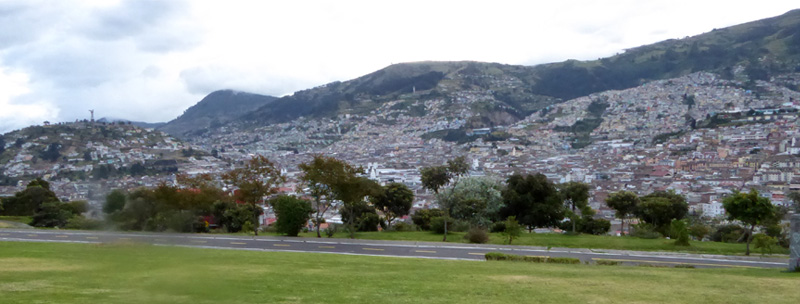
This view sweeping from the location of the Mary statue across the valley containing la Catedral and many other churches.
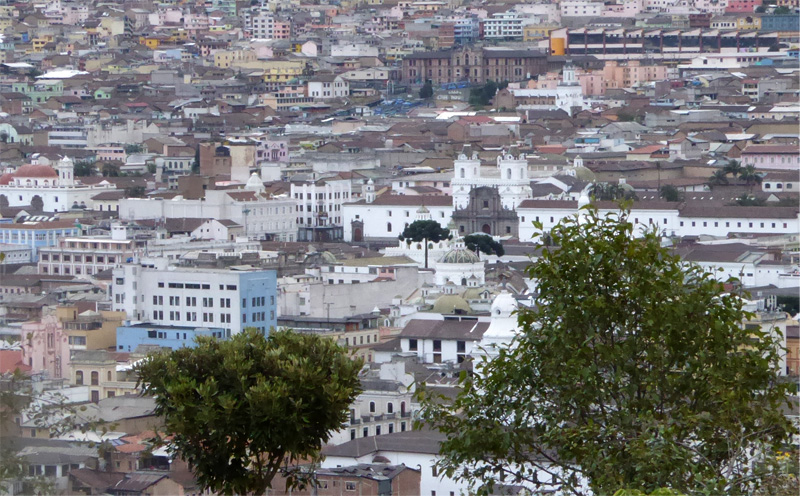
 | After hearing from Ron about the challenges of ministry in Quito, we spread out for our individual prayer time for the city and for the week of service we had before us. |
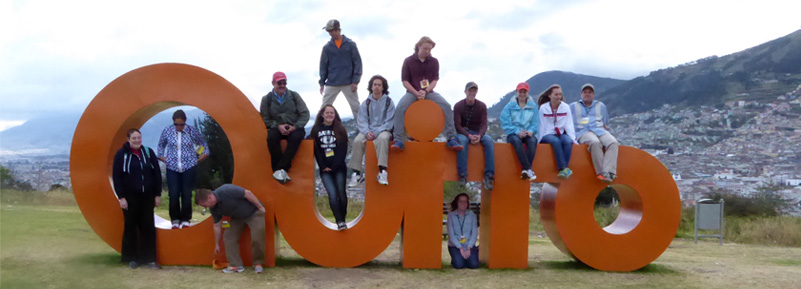
 | Northshore group Luis, Michael, Jhanne, Hannah and Dustin by the Quito sculpture. |
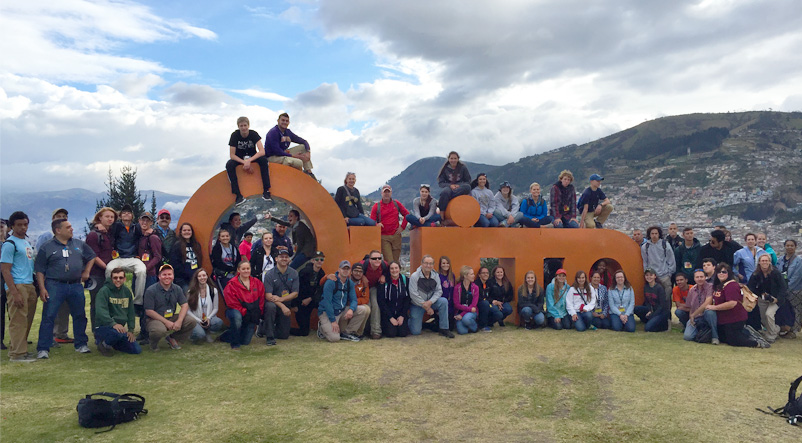
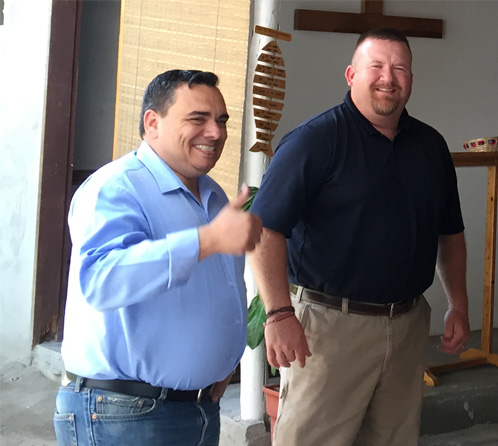 | Above, around the big orange metal sculpture of the Quito name, is most of the team of 66 people who came to serve in the Quito area this week for International World Changers. In our worship and information sessions we got to know Ron Sutton, missionary for the Quito area, and Shawn Edwards, coordinator for this IWC mission trip and Pastor of the North Park church in Ft. Worth, Texas. |
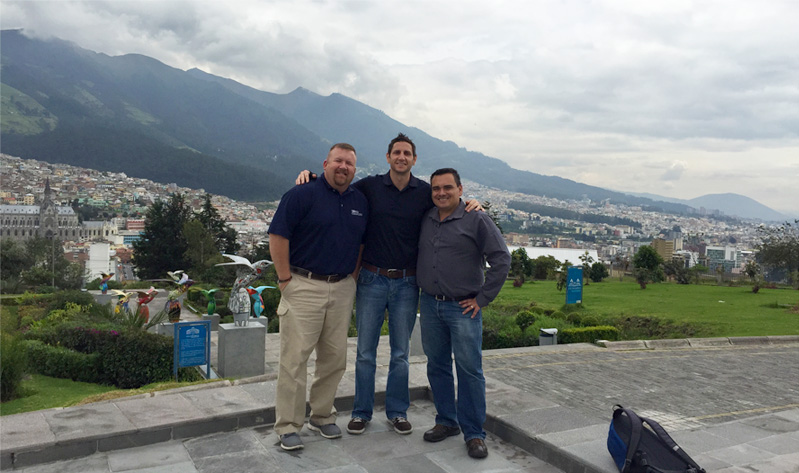
Shawn Edwards, Luis Socarras and Ron Sutton were our main coordinators and guides for the effort this week. Below, Ron with a panorama of the old Quito area that we could see from the park.




Panoramic shots that show the sprawl of the dense housing of Quito over the rises and valleys of this 9000+ foot highland area of Ecuador.
| to Monday, July 6 |
2015